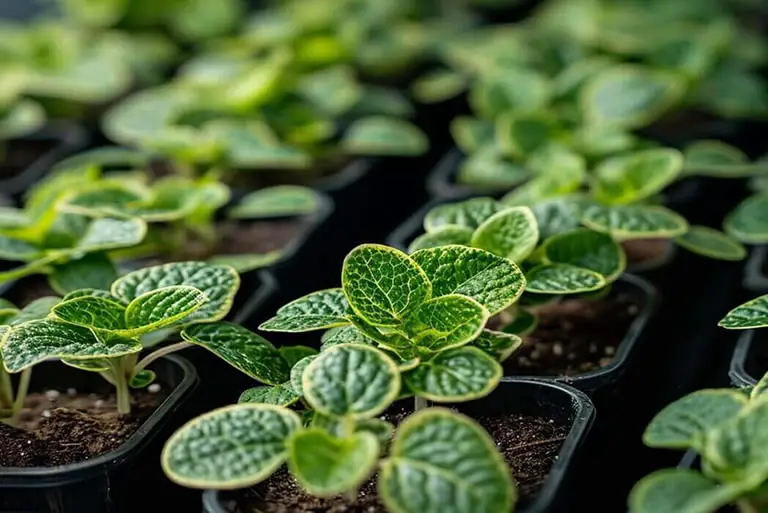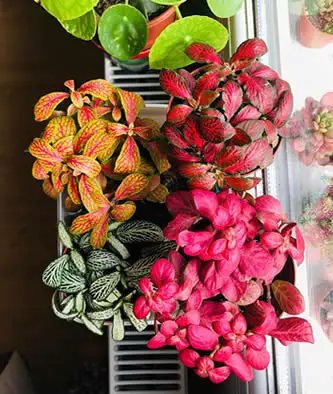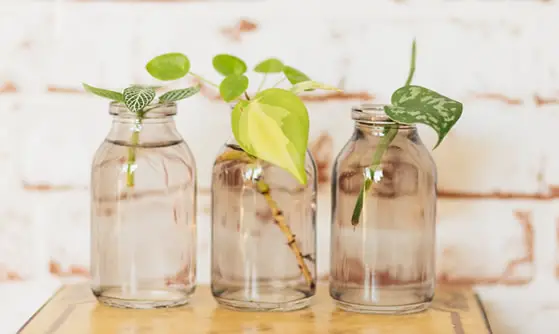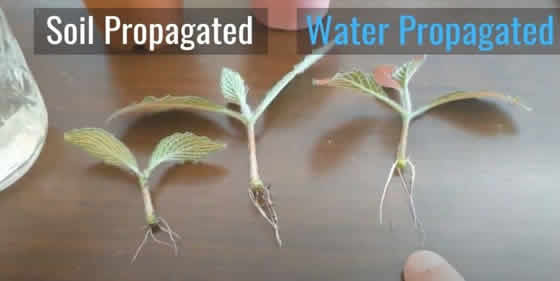Nerve Plant Propagation: How to Multiply Your Fittonia the Easy Way

Fittonia, or the Nerve Plant, is a compact and colorful houseplant that’s as fun to propagate as it is to grow. With its creeping stems and shallow roots, it lends itself well to beginners and seasoned plant lovers alike. Whether you want to fill out your current pot, start a whole new one, or share it with friends, you’ll find several easy ways to get it done.
Here’s how to propagate your Nerve Plant successfully in water, soil, or through division—and how to give your new baby plants the best start.
Table of Contents
- Best Time to Propagate: Catch It During Active Growth
- What You’ll Need: Tools and Setup
- Water Propagation: Quick, Visual, and Reliable
- Soil Propagation: Skip the Jar and Go Straight to the Pot
- Division: The Fastest Way to Get a New Plant
- Outdoor Propagation: A Summer Option in Mild Climates
- Caring for New Plants: Gentle Light and Consistent Moisture
- Final Thoughts
Best Time to Propagate: Catch It During Active Growth
The ideal time to propagate Fittonia is in spring or early summer, when the plant is actively growing and more likely to root quickly.

Avoid propagating during winter when the plant’s energy is low and roots are slower to form.
What You’ll Need: Tools and Setup
You’ll need a clean, sharp pair of scissors or snips, small pots or jars, water or soil for rooting, and optional rooting hormone.
Always wipe clean anything you are using to produce cuttings. I use alcohol wipes as they are an easy one-time use way to disinfect my shears so I avoid contaminating the new cuttings (which will stop them rooting), but of course a cloth and dish soap will work just as well – just be sure to thoroughly clean away any soap residue before cutting the plant.
Choose healthy stems with no pests or damage, ideally ones that already have visible nodes or small aerial roots.
Water Propagation: Quick, Visual, and Reliable
Take a cutting just below a node, remove the lower leaves, and place the stem in a small jar of clean water, ensuring at least one node is submerged.
Place the jar in bright, indirect light and change the water every few days to keep it fresh.
Bonus Tip: You can encourage faster root development by adding a drop or two of a balanced liquid fertilizer, such as a 10-10-10 formula, like this one, diluted to one-tenth strength.

This provides a gentle nutrient boost while roots are forming—just be sure not to overdo it.
Roots usually appear in 1 to 2 weeks. Once they reach about 1–2 inches long, you can transfer the cutting to soil.
Soil Propagation: Skip the Jar and Go Straight to the Pot
If you prefer to root your cutting directly in soil, use a small pot filled with moist, well-draining potting mix.
Dip the cut end in rooting hormone if you have it (optional), and plant the cutting with the node just below the surface.
Covering the pot loosely with a plastic bag helps retain humidity and encourages rooting.
Place it in bright, indirect light and keep the soil lightly moist.
You’ll know roots are developing when you see new leaf growth after 2–3 weeks.
Division: The Fastest Way to Get a New Plant
Fittonia naturally spreads in clumps, making it ideal for division.
Remove the mother plant from its pot and gently pull apart the root ball into two or more sections.
Each section should have its own roots and stems.

Replant each division in its own pot with fresh soil and water well.
This is a great method for older, fuller plants that have outgrown their pots or need a refresh.
Outdoor Propagation: A Summer Option in Mild Climates
In USDA zones 11 and 12—or during warm summer months—you can root Fittonia cuttings outdoors as long as the weather is warm and humid.
Use a shaded, protected area like a covered patio or greenhouse shelf.
If rooting in water, make sure the container is sheltered from rain.
For soil propagation, keep humidity high with a plastic dome or humidity tray.
Bring the cuttings indoors once temperatures drop below 65°F at night, and always transition them slowly to avoid stress.
Caring for New Plants: Gentle Light and Consistent Moisture
Once your cuttings are planted in soil, keep them in bright, indirect light and maintain high humidity.
Mist daily or use a humidity tray to keep the air moist.
Don’t let the soil dry out, but avoid waterlogging as well.
Hold off on fertilizing for the first month.
Once new growth appears and roots are well established, you can begin feeding with a diluted liquid fertilizer every 4–6 weeks.
You can read our article Nerve Plant Care: How to Keep Fittonia Thriving With Color and Flair for more detailed instructions.
Final Thoughts
Propagating Nerve Plants is a simple and satisfying process—especially since they root quickly and respond well to attention.
Whether you’re snipping a stem for water, planting directly in soil, or dividing a mature cluster, you’ll find that Fittonia is generous with new growth and easy to multiply.
With just a little humidity, soft light, and care, you’ll soon have a handful of new plants ready to liven up your space.
Thanks for reading! I'm Michael — houseplant fanatic and your Pinterest plant guide.
Follow me on Pinterest for fresh updates 🌿



